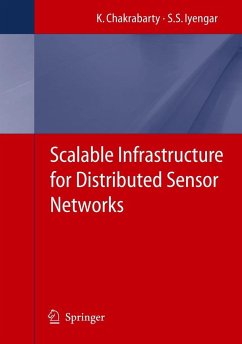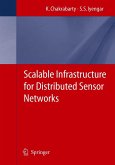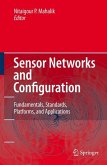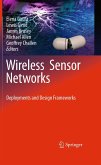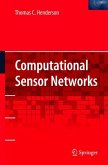Wireless sensor networks is a rapidly developing area. New applications are emerging and breakthroughs are being made in solving the underlying scientific problems.
The effectiveness of sensor networks depends largely on deployment strategies, self-organization capabilities, routing and information dissemination protocols, all of which contribute to the underlying network infrastructure.
Infrastructure Design for Sensor Networks is the first book to address basic infrastructure issues in wireless sensor networks. The book tackles the problems that must be addressed before sensors are deployed for surveillance, tracking, and other monitoring applications and the solutions described are scalable for large and dense sensor networks.
Infrastructure Design for Sensor Networks will be an invaluable reference source for researchers and graduate students on this topical and important subject.
Advances in the miniaturization of microelectromechanical systems have led to battery-powered sensor nodes that have sensing, communication and p- cessingcapabilities. Thesesensornodescanbenetworkedinanadhocmanner to perform distributed sensing and information processing. Such ad hoc s- sor networks provide greater fault tolerance and sensing accuracy and are typically less expensive compared to the alternative of using only a few large isolated sensors. These networks can also be deployed in inhospitable terrains or in hostile environments to provide continuous monitoring and processing capabilities. A typical sensor networkapplication is inventorytracking in factorywa- houses. A single sensor node can be attached to each item in the warehouse. These sensor nodes can then be used for tracking the location of the items as they are moved within the warehouse. They can also provide information on the location of nearby items as well as the history of movement of various items. Oncedeployed, the sensor network needs very little human interv- tion and can function autonomously. Another typical application of sensor networks lies in military situations. Sensor nodes can be air-dropped behind enemy lines or in inhospitable terrain. These nodes can self-organize th- selves and provide unattended monitoring of the deployed area by gathering information about enemy defenses and equipment, movement of troops, and areas of troop concentration. They can then relay this information back to a friendly base station for further processing and decision making. Sensor nodes are typically characterizedby small form-factor,limited b- tery power, and a small amount of memory.
The effectiveness of sensor networks depends largely on deployment strategies, self-organization capabilities, routing and information dissemination protocols, all of which contribute to the underlying network infrastructure.
Infrastructure Design for Sensor Networks is the first book to address basic infrastructure issues in wireless sensor networks. The book tackles the problems that must be addressed before sensors are deployed for surveillance, tracking, and other monitoring applications and the solutions described are scalable for large and dense sensor networks.
Infrastructure Design for Sensor Networks will be an invaluable reference source for researchers and graduate students on this topical and important subject.
Advances in the miniaturization of microelectromechanical systems have led to battery-powered sensor nodes that have sensing, communication and p- cessingcapabilities. Thesesensornodescanbenetworkedinanadhocmanner to perform distributed sensing and information processing. Such ad hoc s- sor networks provide greater fault tolerance and sensing accuracy and are typically less expensive compared to the alternative of using only a few large isolated sensors. These networks can also be deployed in inhospitable terrains or in hostile environments to provide continuous monitoring and processing capabilities. A typical sensor networkapplication is inventorytracking in factorywa- houses. A single sensor node can be attached to each item in the warehouse. These sensor nodes can then be used for tracking the location of the items as they are moved within the warehouse. They can also provide information on the location of nearby items as well as the history of movement of various items. Oncedeployed, the sensor network needs very little human interv- tion and can function autonomously. Another typical application of sensor networks lies in military situations. Sensor nodes can be air-dropped behind enemy lines or in inhospitable terrain. These nodes can self-organize th- selves and provide unattended monitoring of the deployed area by gathering information about enemy defenses and equipment, movement of troops, and areas of troop concentration. They can then relay this information back to a friendly base station for further processing and decision making. Sensor nodes are typically characterizedby small form-factor,limited b- tery power, and a small amount of memory.

